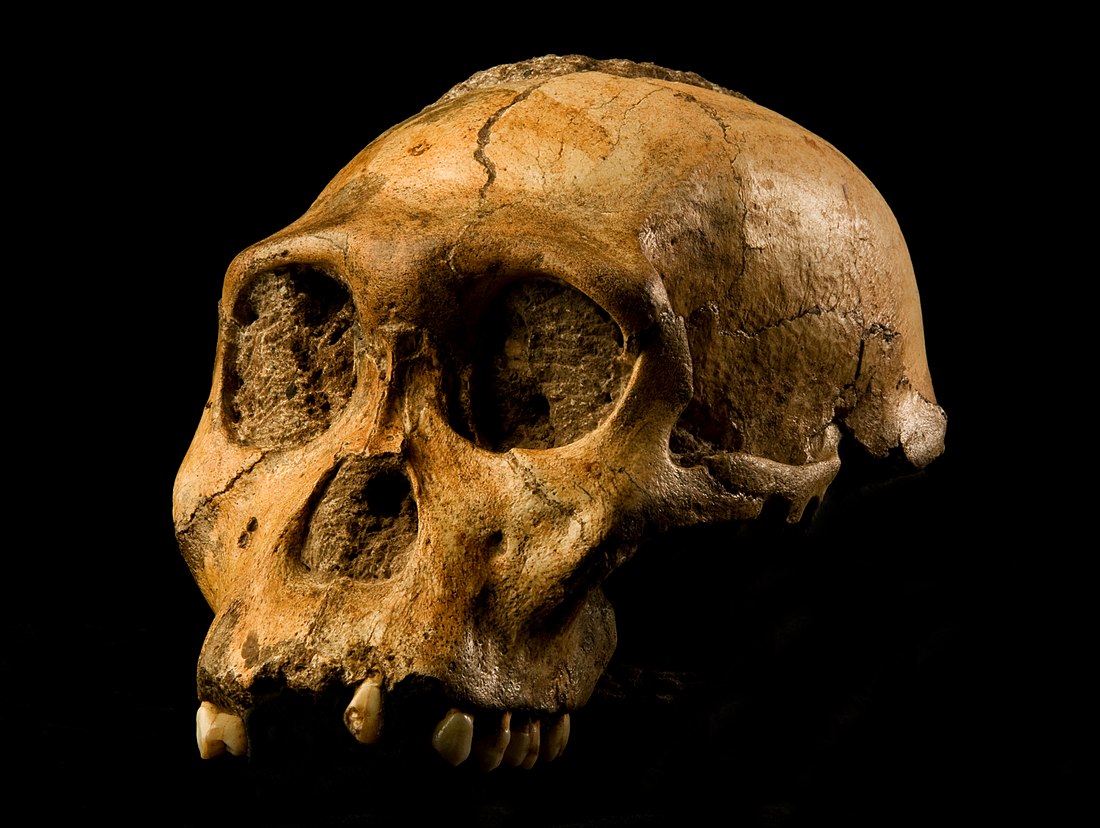Cradle of Humankind
paleoanthropological site near Johannesburg, South Africa From Wikipedia, the free encyclopedia
Remove ads

The Cradle of Humankind is a World Heritage Site, named by UNESCO in 1999. The site is about 50 kilometres northwest of Johannesburg, South Africa in the Gauteng province. It occupies 47,000 hectares (180 sq mi).[1]
Remove ads
Fossils
The site is called the Cradle of Humankind because it has produced a large number of hominid fossils, including some of the oldest. Some date back as far as 3.5 million years ago.[2]
These fossils were found in the site's limestone caves, including the Sterkfontein Caves. Of all the early hominid fossils ever found, more than a third were found in Sterkfontein.[3]
In 1947 Robert Broom and John T. Robinson discovered a 2.3-million-year-old fossil of Australopithecus africanus (which they nicknamed 'Mrs. Ples'). Previously, in 1924, Raymond Dart discovered a juvenile A. africanus skull at Taung in the North West Province of South Africa. (The fossil was nicknamed the 'Taung Child'). Excavations still continue at this site.
Remove ads
Recent work
Australopithecus sediba
In 2008 near Johannesburg, archaologists found the remains of several partial skeletons of a previously unknown australopithecine species, A. sediba.[4] The remains have been dated to about two million years ago (mya). Based on a recent re-examination of two partial A. sediba skeletons, this species is close to the origin of the genus Homo.[5] Not all palaeoanthropologists agree that it is a new species.[6]
A new analysis shows this species had a human-like pelvis, hands and teeth, and a chimpanzee-like foot. In six separate research reports, palaeontologists reported on the anatomy of a juvenile male skeleton, MH1; a female skeleton, known as MH2; and an isolated adult tibia (shinbone), known as MH4. The findings suggest that some species of australopithecine climbed trees, some walked on the ground, and some did both:[7]
Its small heel resembles that of a chimpanzee more than it does a human. This suggests it likely walked with an inward rotation of the knee and hip, with its feet slightly twisted. This primitive way of walking might have been a compromise between upright walking and tree climbing, the researchers suggest, since A. sediba seems to have had more adaptations for tree-climbing than other australopithecines.[7]
Scientists in England investigated the skeletons' teeth. Like other parts of the skeletons, the teeth are a mosaic of primitive and human-like features.[8]
Remove ads
References
Wikiwand - on
Seamless Wikipedia browsing. On steroids.
Remove ads
